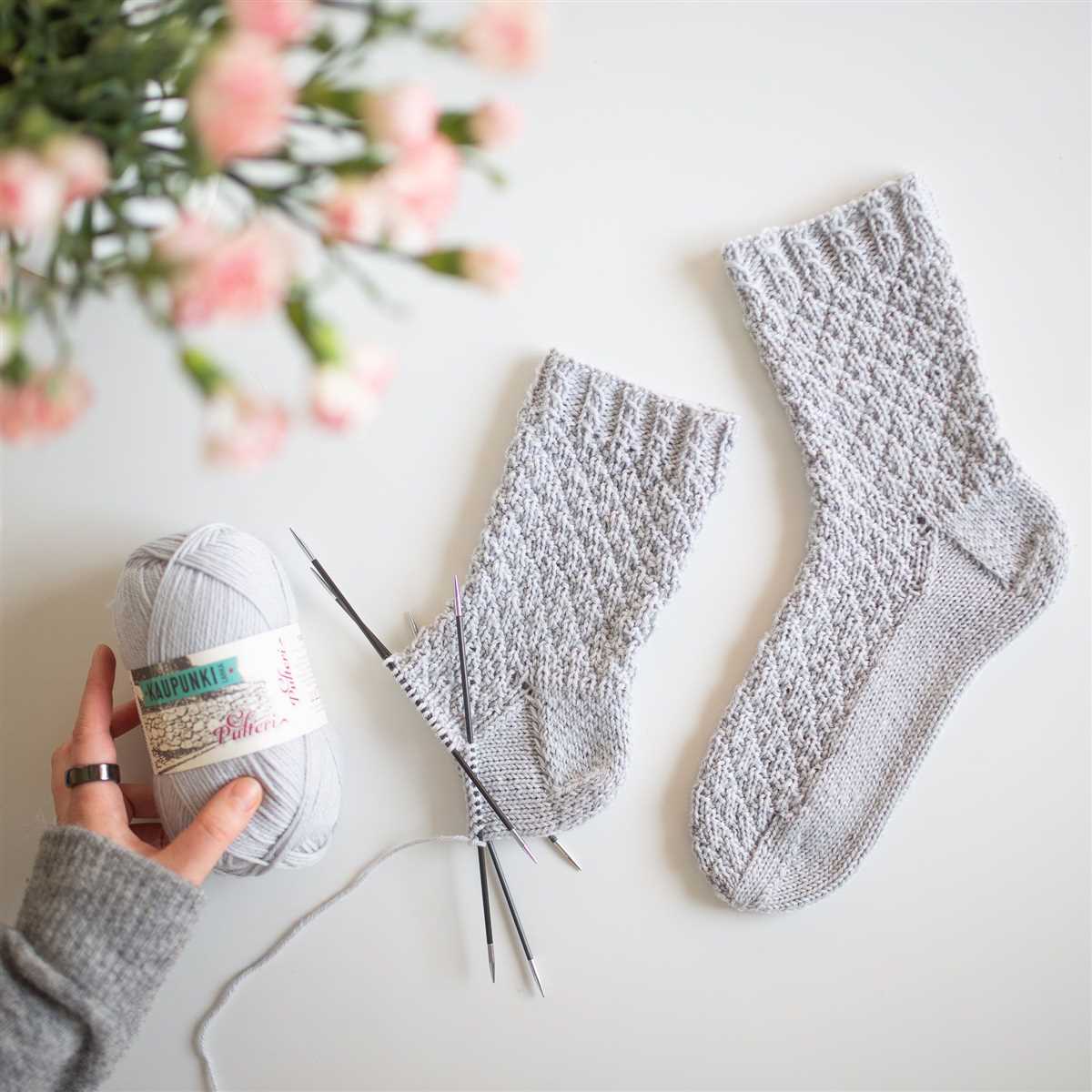
If you love knitting and want to try something new, why not give a knitted sock pattern without a heel a try? Traditional socks can be quite complex to knit, especially when it comes to shaping the heel. But with this no-heel pattern, you can easily create cozy and comfortable socks without the hassle of heel shaping.
One of the great things about this pattern is that it is suitable for both beginners and experienced knitters. If you’re new to sock knitting, this pattern is a great way to get started and practice your basic knitting skills. For more experienced knitters, it offers a fun and unique challenge, allowing you to experiment with different stitch patterns and explore new techniques.
Not only is this no-heel sock pattern easier to knit, but it also results in socks that are more comfortable to wear. Without a heel, there is no bulky seam or excess fabric that can cause blisters or discomfort. The socks fit snugly around the foot and ankle, providing warmth and coziness without any unnecessary bulk.
So whether you’re a beginner looking for a simple knitting project or an experienced knitter wanting to try something new, the knitted sock pattern without a heel is a great choice. Get your needles and yarn ready, and start creating your own cozy and comfortable socks today!
What Are Knitted Socks Without Heels?
Knitted socks without heels, also known as “no-heel” socks, are a unique variation of traditional knitted socks. Unlike regular socks that have a defined heel and toe, these socks are constructed in a completely different way. Instead of knitting a separate heel flap and gusset, the entire sock is knitted in one continuous piece from the toe up.
With no-heel socks, the knitting pattern starts by casting on stitches for the toe and then gradually increases the number of stitches to create the foot and leg sections. The lack of a defined heel may seem unusual at first, but the socks are designed to fit snugly and comfortably without the need for a traditional heel shaping.
This style of sock knitting is often favored by those who want to try something different or are looking for a quick and simple project. No-heel socks can be a great option for beginners who are just starting to knit socks, as they eliminate the complexity of heel construction and make the process more straightforward.
While no-heel socks may not provide the same level of support and cushioning as traditional socks, they can still be quite comfortable to wear. The stretchy nature of the knitted fabric allows the sock to conform to the shape of the foot, providing a cozy and snug fit. These socks can be a fun and creative way to experiment with different stitch patterns and colors, as there are no limitations imposed by heel shaping.
Overall, knitted socks without heels offer an alternative approach to sock knitting, allowing for a different construction method and unique design possibilities. Whether you prefer the traditional heel flap and gusset or want to try something new, exploring different sock knitting techniques can be a rewarding and enjoyable experience.
Advantages of knitting socks without heels
Knitting socks without heels may seem unconventional, but it offers several advantages for both beginners and experienced knitters. This technique eliminates the need to shape a traditional heel, simplifying the knitting process and creating a unique, seamless design. Here are some benefits of knitting socks without heels:
- Simplicity: Knitting socks without heels is a great option for beginners or those who prefer a simpler knitting project. Without the need to shape a heel, the pattern becomes more straightforward and easier to follow.
- Time-saving: Knitting socks without heels can save time compared to traditional sock patterns. With fewer steps involved, you can complete your socks more quickly and enjoy the satisfaction of finishing a project in less time.
- Comfort: Socks knitted without heels can offer a more comfortable fit as they eliminate the potential for a snug or tight heel area. The absence of a heel also means there are no seams or bulkiness to cause discomfort.
- Customization: With a no-heel sock pattern, you have the freedom to customize the length and fit of the socks to your liking. You can easily adjust the number of stitches or rows to accommodate different foot sizes or preferences.
- Creative possibilities: Knitting socks without heels opens up a world of creative possibilities. You can experiment with different stitch patterns, color combinations, or decorative elements without worrying about interrupting the heel shaping.
Overall, knitting socks without heels offers simplicity, time-saving benefits, improved comfort, customization options, and creative opportunities. Whether you’re a beginner knitter or an experienced one looking for a new challenge, trying out a no-heel sock pattern can be both rewarding and enjoyable.
Materials needed for knitted socks without heels
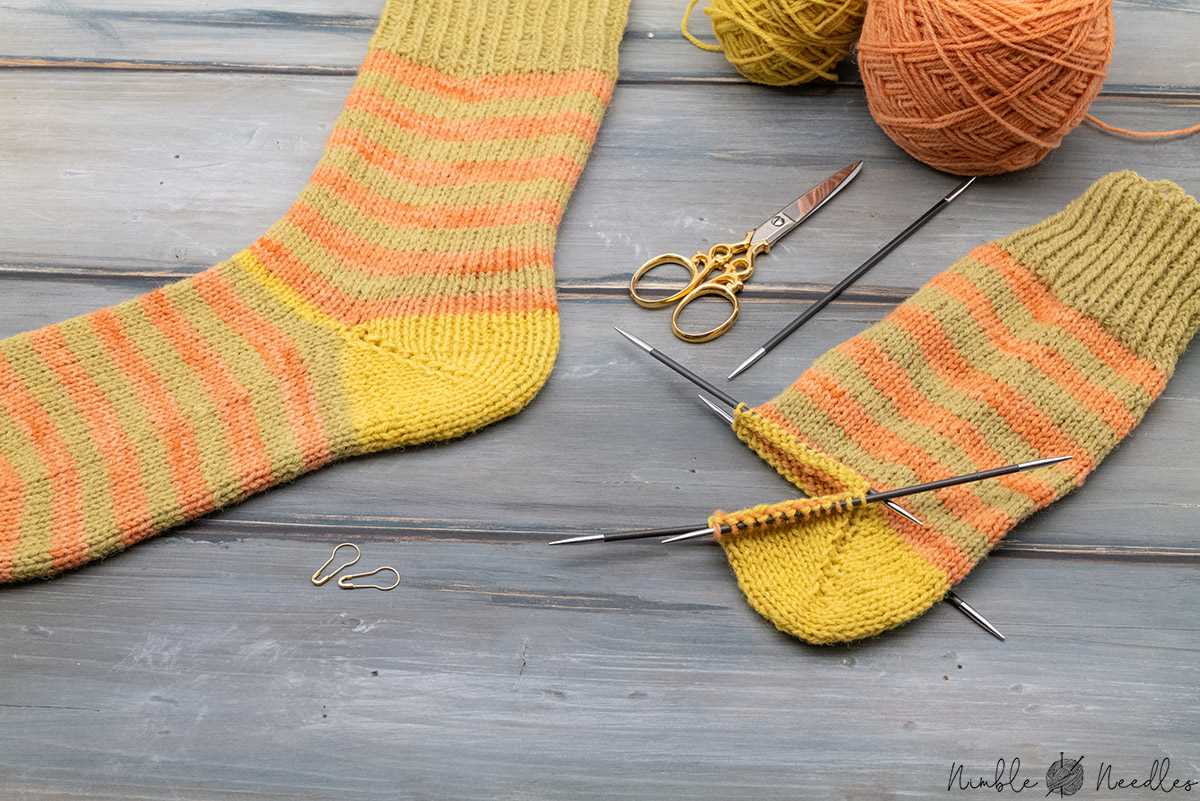
Knitting socks without heels can be a fun and unique project to undertake. These socks are typically made using a special construction technique that allows for a seamless and comfortable fit. If you’re interested in trying your hand at knitting socks without heels, here are the materials you’ll need:
1. Yarn:
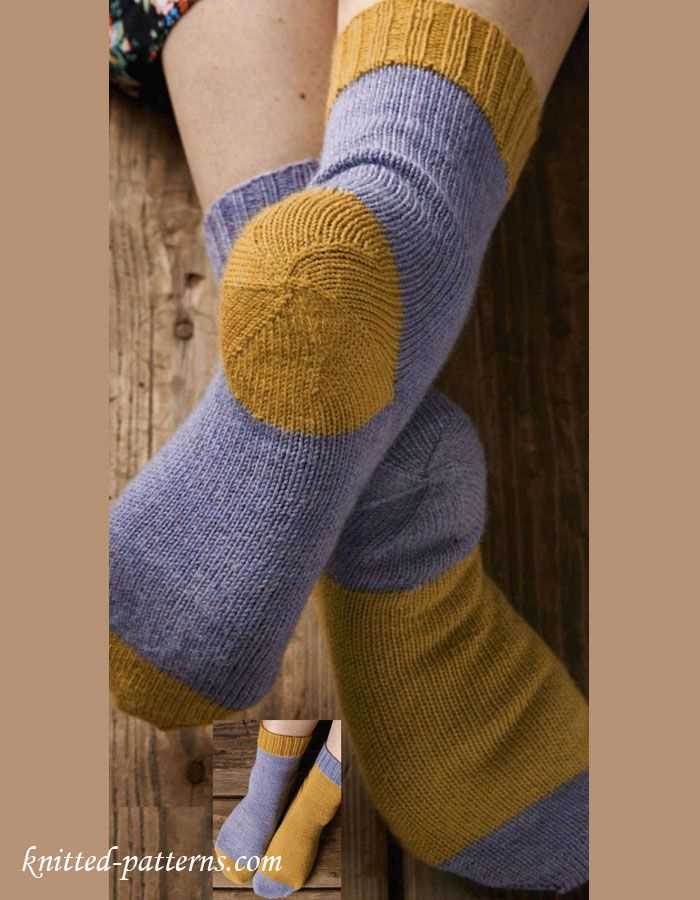
Choose a yarn that is suitable for socks, such as a wool or wool blend yarn. The yarn should be soft, durable, and able to withstand regular wear and washing. It’s also important to consider the weight of the yarn, as it will affect the overall thickness of your socks.
2. Needles:
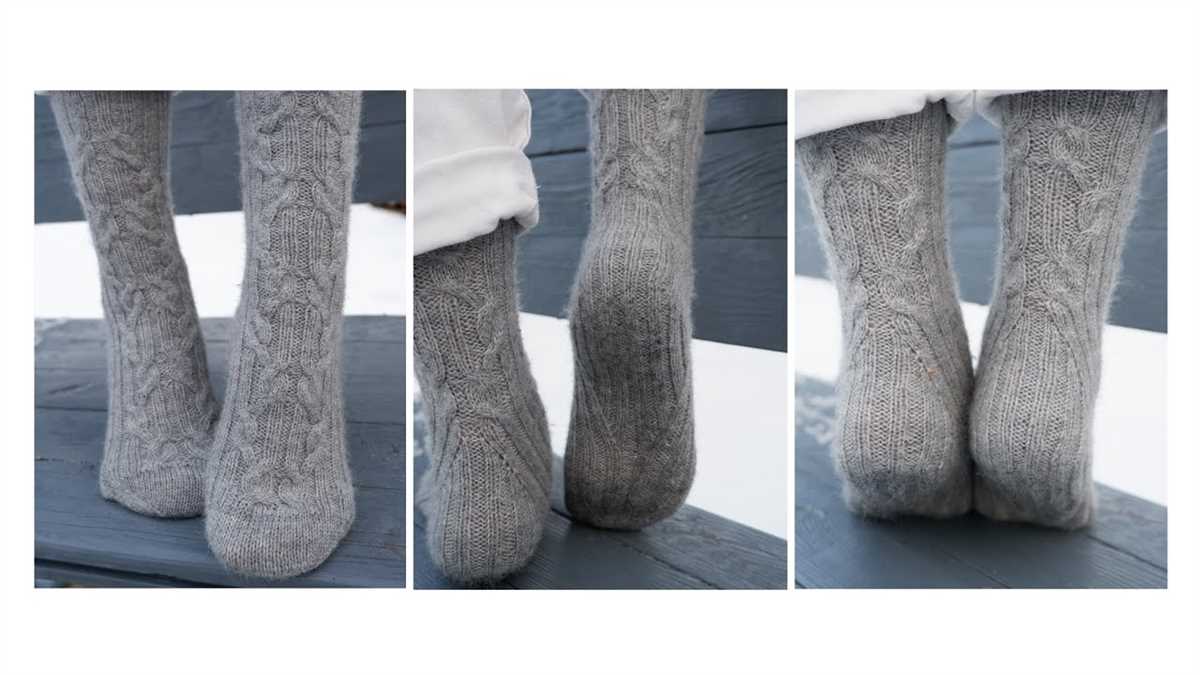
You’ll need a set of double-pointed needles or circular needles in the appropriate size for your chosen yarn. The size of the needles will depend on your own knitting tension and the desired gauge for your socks. Make sure to choose needles that are comfortable to use and allow you to achieve the required tension.
3. Stitch markers:
Stitch markers are essential for marking the beginning and end of each round when knitting in the round. They can also be used to mark any specific pattern repeats or sections in your sock pattern. Choose stitch markers that are easily removable and won’t snag your yarn.
4. Tapestry needle:
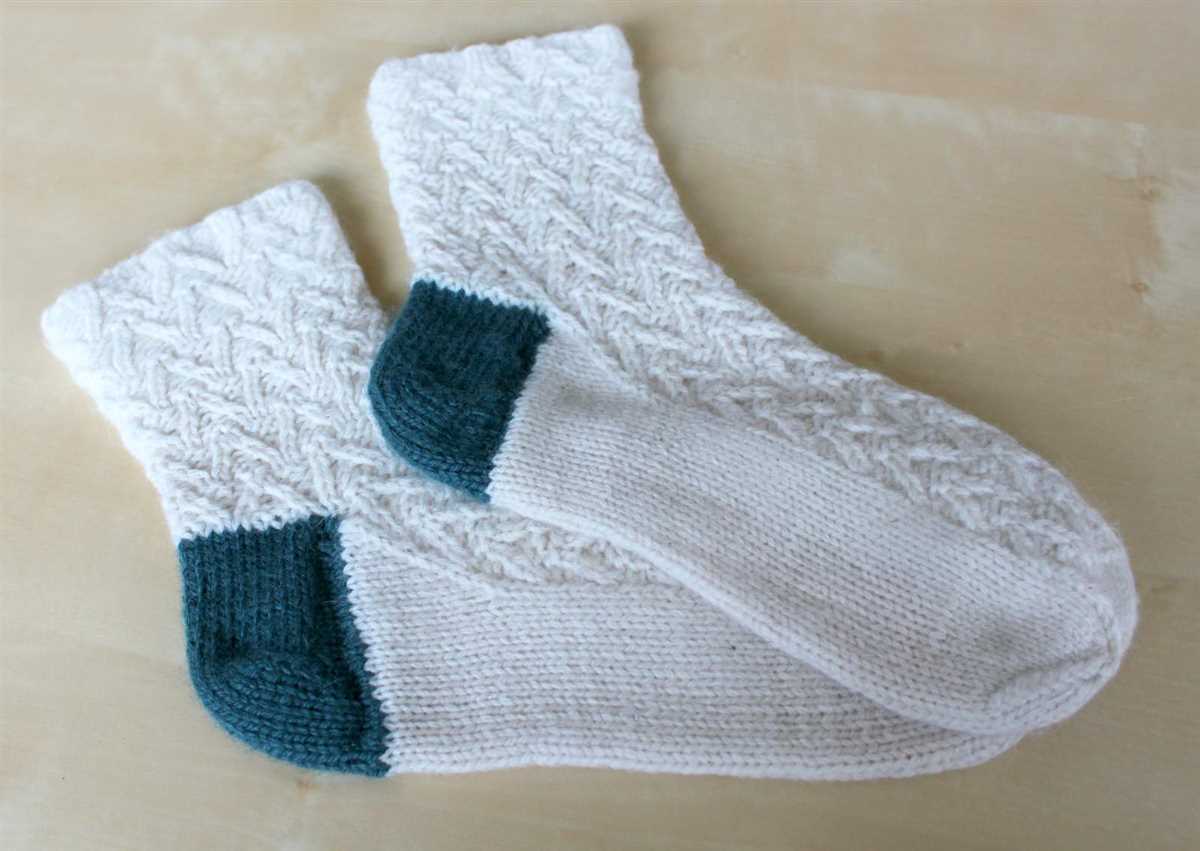
A tapestry needle is necessary for weaving in loose ends and finishing off your socks. Look for a needle with a large eye that can easily accommodate your yarn. A blunt tip will also help prevent accidental snags or splits in your stitches.
5. Optional accessories:
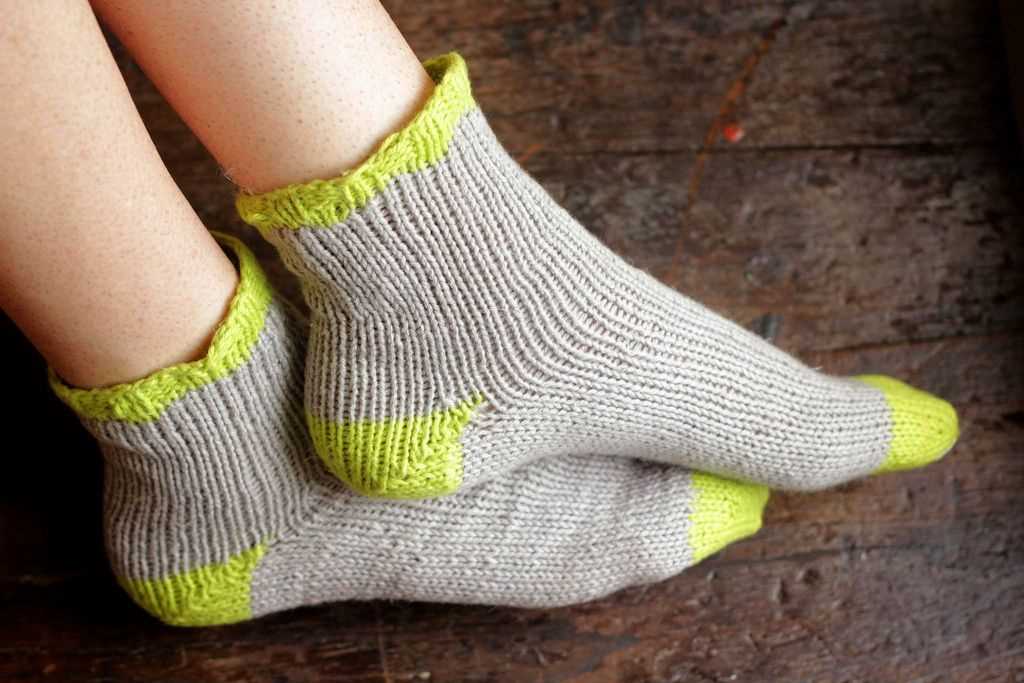
Depending on your personal preference and the techniques used in your chosen pattern, you may also need additional tools or accessories. This could include cable needles, stitch holders, or a row counter. Read through your pattern carefully to determine if any extra supplies are needed.
Step-by-step instructions for knitting socks without heels
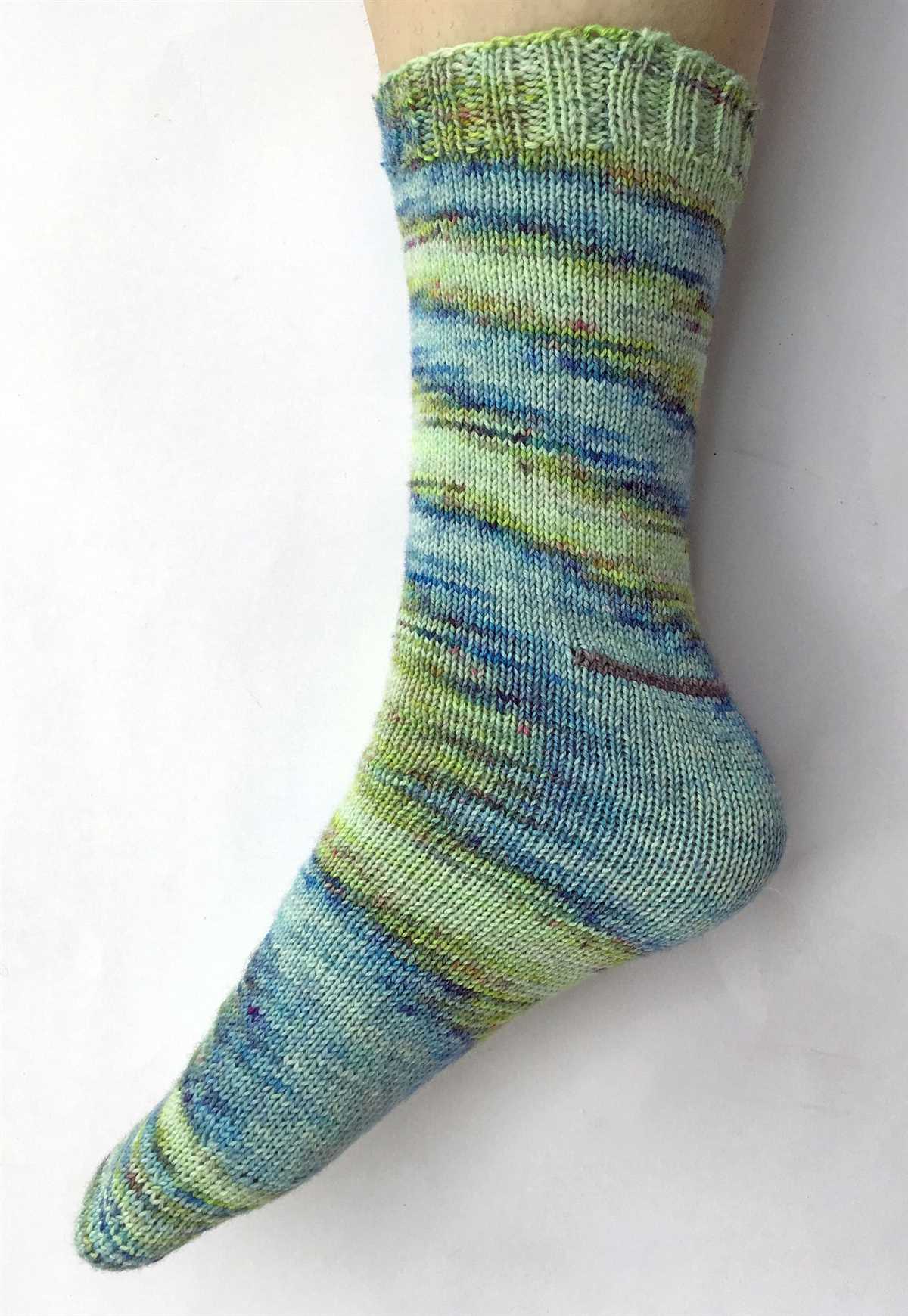
If you’re looking for a unique and creative knitting project, why not try knitting socks without a heel? This pattern creates a fun and whimsical pair of socks that are perfect for lounging around the house or giving as a gift. Follow these step-by-step instructions to create your own pair of no-heel socks.
Materials:
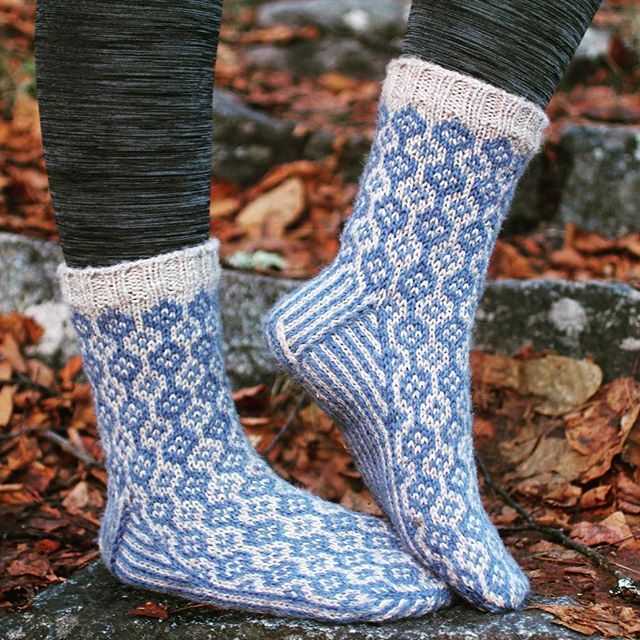
- Yarn: Choose a soft and comfortable yarn in your preferred color. Consider using a sock yarn for durability.
- Knitting needles: Select a pair of needles that are the appropriate size for your yarn. Double-pointed needles or circular needles are recommended.
- Tapestry needle: Needed for weaving in ends.
- Stitch markers: Optional, but can be helpful for keeping track of your stitches.
Instructions:
- Cast on: Start by casting on the required number of stitches. This will vary depending on your desired sock size and yarn weight. Typically, casting on 64-72 stitches is a good starting point for an adult-sized sock.
- Join in the round: Once you have cast on all the stitches, join in the round and place a stitch marker at the beginning of the round. This will help you keep track of your rounds as you work.
- Knit the leg: Knit in the round for the desired length of the leg. This can vary depending on personal preference, but a length of 6-8 inches is common.
- Knit the foot: After completing the leg, continue knitting in the round for the desired length of the foot. Measure the recipient’s foot or use a standard foot measurement to determine the length needed. Remember to leave room for the toes.
- Toe decreases: To shape the toe, start decreasing stitches. This can be done in a variety of ways, such as using a standard toe decrease or trying a more decorative decrease pattern. Continue decreasing until you have a small number of stitches remaining.
- Bind off: Finally, bind off the remaining stitches and weave in any loose ends with a tapestry needle. Try the sock on and make any necessary adjustments for fit.
Now you have a pair of unique and quirky socks without a heel! This pattern is a great way to experiment with different stitch patterns or colorwork techniques. Get creative with your yarn choices and make a pair of socks that truly reflect your personal style. Whether you’re knitting for yourself or someone else, these socks are sure to be a fun and interesting project.
Tips and Tricks for Knitting Socks without Heels
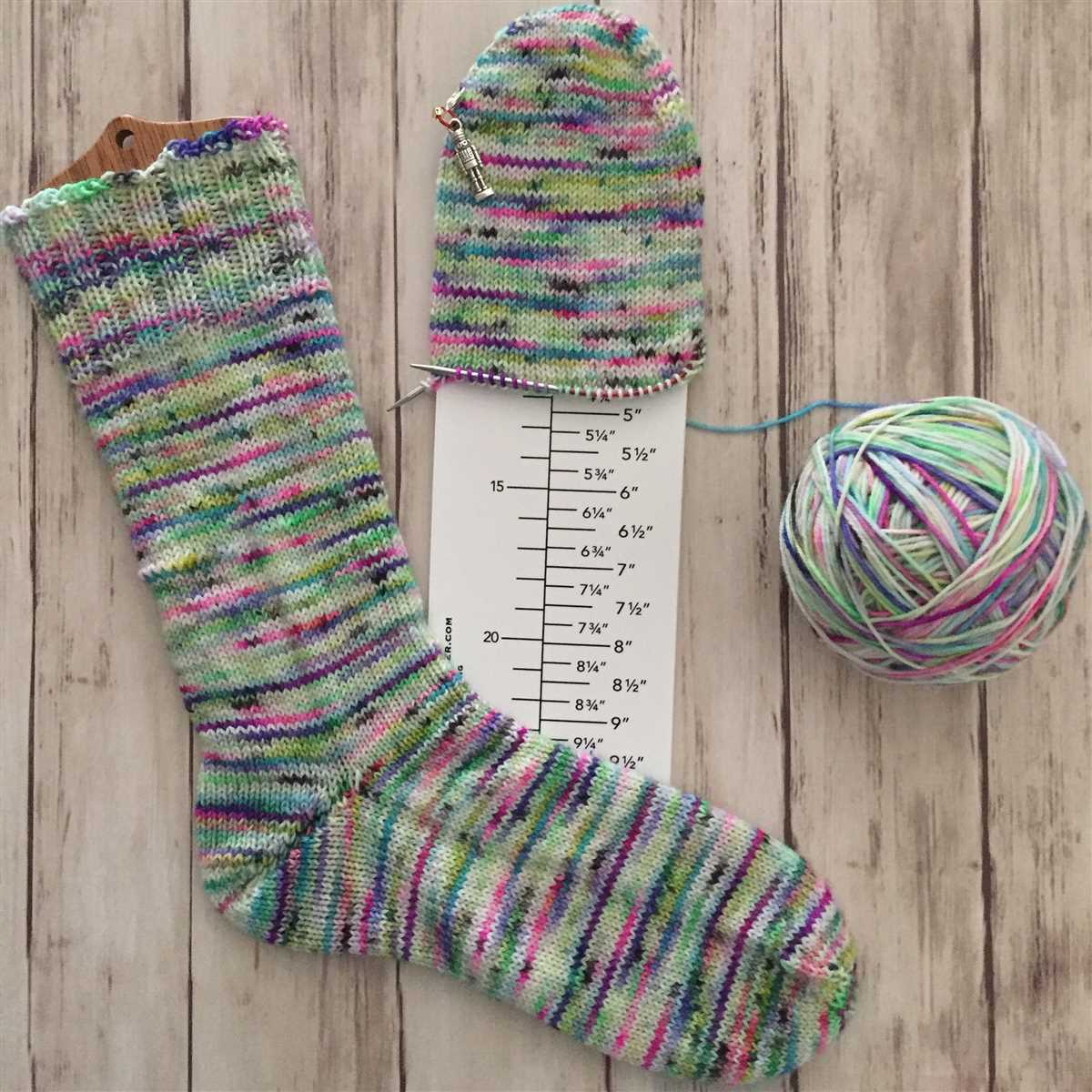
Knitting socks without heels can be a fun and creative project for knitters looking to try something new and experiment with different techniques. While it may seem challenging at first, with a few tips and tricks, you can easily master this unique knitting method.
1. Choose the Right Yarn
When knitting socks without heels, it’s important to choose a yarn that has good stretch and memory. Look for a yarn blend that includes a high percentage of wool or a yarn specifically designed for socks. This will ensure that the finished socks fit comfortably and have good durability.
2. Use a Toe-Up Construction
One popular method for knitting socks without heels is the toe-up construction. This allows you to start the socks at the toe and work your way up, rather than starting at the cuff and working your way down. This gives you more flexibility in terms of adjusting the length and fit of the socks.
3. Experiment with Short Row Shaping
Short row shaping is a technique commonly used in sock knitting to create a curved shape for the toes and heels. When knitting socks without heels, you can use short row shaping to create a similar curved shape for the toes. This will provide a more comfortable fit and prevent the socks from bunching up or feeling too tight in the toe area.
4. Add Reinforcements
Another tip for knitting socks without heels is to add reinforcements in high-stress areas such as the toes and heels. This can be done by using a reinforcing thread or adding extra stitches in these areas. By reinforcing these parts of the socks, you can ensure that they will last longer and withstand regular wear and tear.
5. Explore Different Stitch Patterns
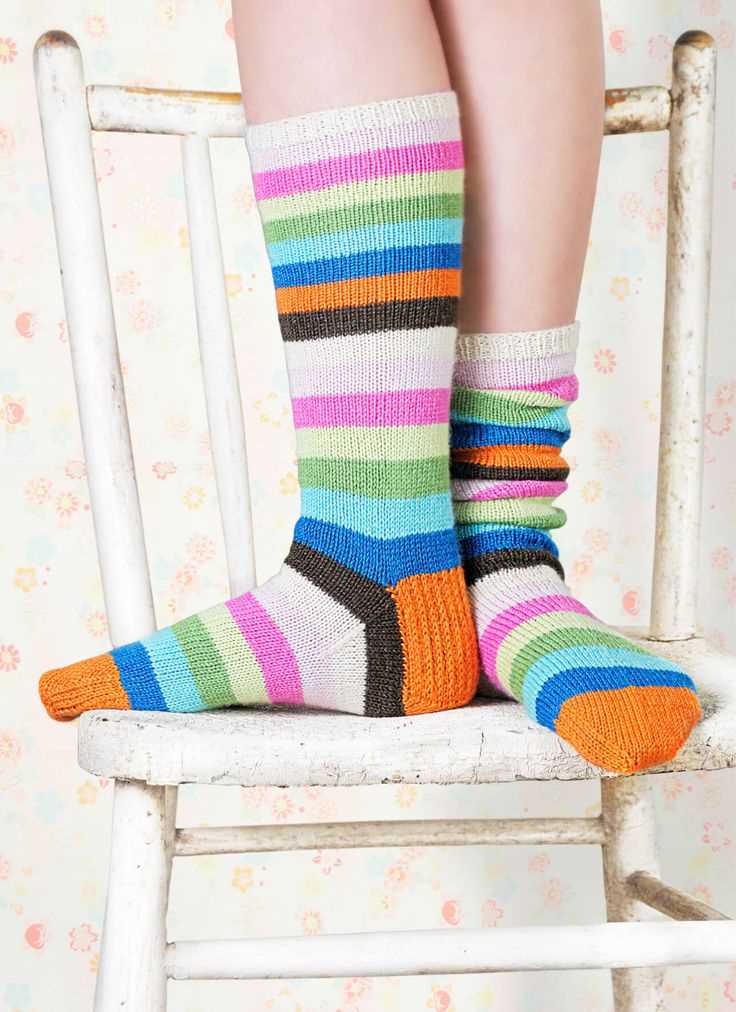
One of the benefits of knitting socks without heels is that you have more freedom to explore different stitch patterns and textures. You can experiment with lace, cables, and other intricate stitch patterns to create unique and eye-catching socks. This can add an extra level of interest to your knitting project and make it even more enjoyable.
Overall, knitting socks without heels can be a rewarding and enjoyable experience. By following these tips and tricks, you can create comfortable and stylish socks that will make a great addition to your wardrobe or a thoughtful gift for someone special.
Different variations of knitted socks without heels
Knitting socks without heels is a great way to experiment with different patterns and styles. There are several variations of knitted socks without heels that you can try, each offering its unique design and construction. Whether you are a beginner or an experienced knitter, these variations provide a fun and rewarding knitting project.
1. Ankle-length socks with ribbing: This variation is perfect for those who prefer a snug fit around the ankle. The sock starts with a ribbing pattern, which adds elasticity and ensures a comfortable fit. You can play around with different ribbing patterns such as a 1×1 rib or a k2, p2 rib to create unique designs.
2. Lace socks: If you are looking for a delicate and feminine design, lace socks without heels are a great option. The lace pattern adds an intricate and elegant touch to the socks, making them perfect for special occasions or as a stylish accessory. You can choose from various lace patterns such as leaves, flowers, or geometric designs.
3. Color-blocked socks: Color-blocking is a popular trend in fashion, and you can incorporate it into knitted socks as well. Knitting socks without heels allows you to easily switch between different colored yarns, creating bold and eye-catching designs. You can experiment with contrasting colors or create gradient effects for a unique look.
4. Fair Isle socks: Fair Isle knitting involves working with multiple colors in a single row, creating intricate and colorful patterns. Knitted socks without heels provide an excellent canvas for showcasing Fair Isle designs. You can create patterns inspired by traditional Fair Isle motifs or experiment with your own color combinations.
5. Cable socks: Cables are a classic knitting technique that adds texture and visual interest to any project. Knitting socks without heels allows you to focus on the cable pattern without the complication of shaping the heel. You can choose from simple cable designs or more intricate cable patterns for a stunning pair of socks.
These are just a few examples of the variations of knitted socks without heels. The possibilities are endless, and you can let your creativity run wild with different stitch patterns, yarn types, and color combinations. Whether you knit for yourself or as gifts for loved ones, these socks are sure to be a hit.
How to customize knitted socks without heels for a perfect fit
If you’re tired of knitting socks with heels that just don’t fit quite right, there’s an alternative pattern that allows you to customize the fit for a perfect sock every time. This pattern is known as the “knitted sock pattern no heel,” and it’s gaining popularity among knitters who want a more personalized and comfortable sock.
1. Measure your foot: Before starting the pattern, you’ll need to measure your foot to determine the size and length of the sock. Measure the circumference around the widest part of your foot and the length from your heel to where you want the sock to end. These measurements will help you customize the pattern to fit your foot perfectly.
2. Choose your yarn and needles: Once you have your foot measurements, you can choose the appropriate yarn weight and needle size for your socks. Thicker yarn and larger needles will result in a bulkier sock, while thinner yarn and smaller needles will create a more delicate sock. Consider the season and your personal preferences when selecting your materials.
3. Adjust the pattern: The basic no-heel sock pattern usually involves knitting a tube for the foot and leg, and then adding ribbing or a cuff at the top. To customize the fit, you can modify the number of stitches and rows in the pattern to accommodate your foot measurements. For example, if your foot circumference is larger, you may need to cast on more stitches. If your foot length is shorter, you can knit fewer rows.
4. Try it on as you go: Since there is no heel shaping in this pattern, it’s essential to try on the sock as you knit to ensure a proper fit. You can slip your stitches onto a spare circular needle or piece of waste yarn to try it on comfortably. If the sock feels too loose or too tight, you can make adjustments by adding or removing stitches in the next section of knitting.
5. Finish with a ribbed cuff: Once the tube portion of the sock is complete and fits comfortably, you can finish it off with a ribbed cuff to keep the sock in place. Usually, a simple K2, P2 ribbing works well for this, but you can experiment with different ribbing patterns to add some personal flair to your socks.
With the knitted sock pattern no heel, you can enjoy the process of knitting socks while ensuring a customized fit that feels just right. Don’t be afraid to get creative with colors, patterns, and stitch variations to make your socks truly unique and stylish.
Common mistakes to avoid when knitting socks without heels
A sock knitting pattern without a heel can be a fun and unique project to work on. However, there are some common mistakes that beginners often make when attempting this style of sock. By being aware of these mistakes, you can prevent them and create a beautiful pair of socks.
1. Incorrect stitch count
One of the most common mistakes made when knitting socks without heels is having an incorrect stitch count. It’s important to carefully follow the pattern instructions and make sure you have the correct number of stitches on your needles. This will ensure that the sock fits properly and is comfortable to wear.
2. Ignoring gauge
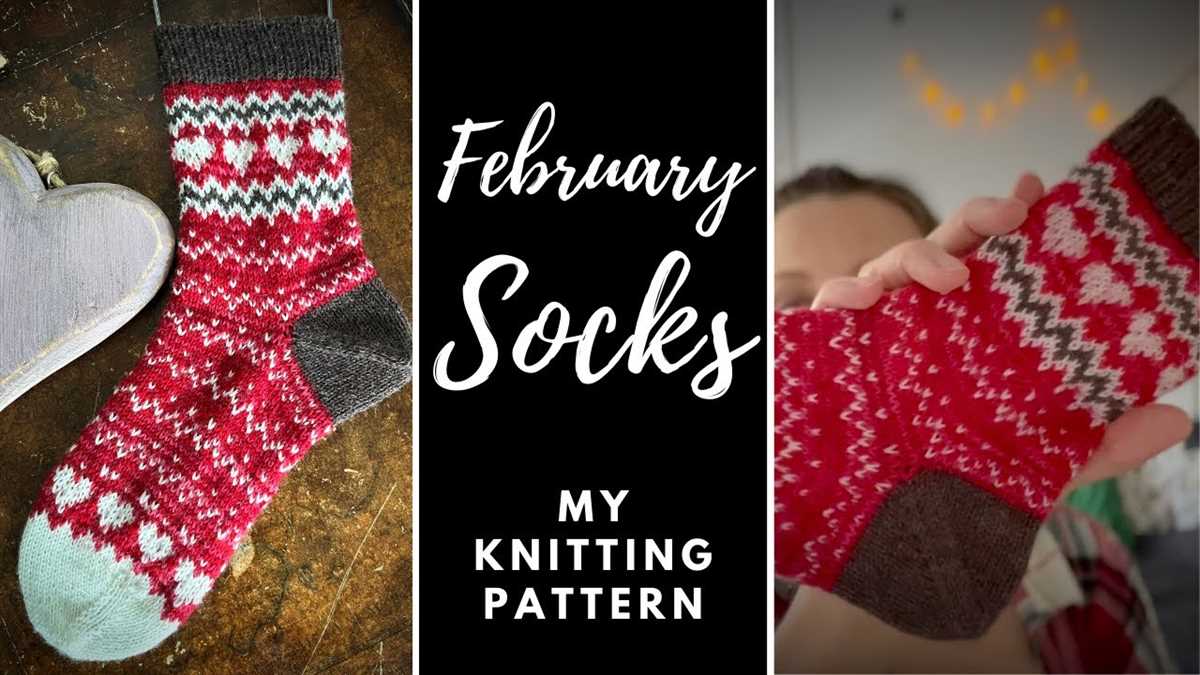
Gauge is crucial in any knitting project, including socks without heels. Ignoring the recommended gauge can result in socks that are either too small or too large. Take the time to swatch and match the gauge provided in the pattern. This will help you achieve the desired size and fit for your socks.
3. Inconsistent tension
Consistent tension is important when knitting socks without heels, as it can affect the overall appearance and fit of the sock. Make sure to knit with a consistent tension throughout the project, avoiding any loose or tight stitches. This will create a more even fabric and prevent any discomfort when wearing the socks.
4. Skipping necessary increases or decreases
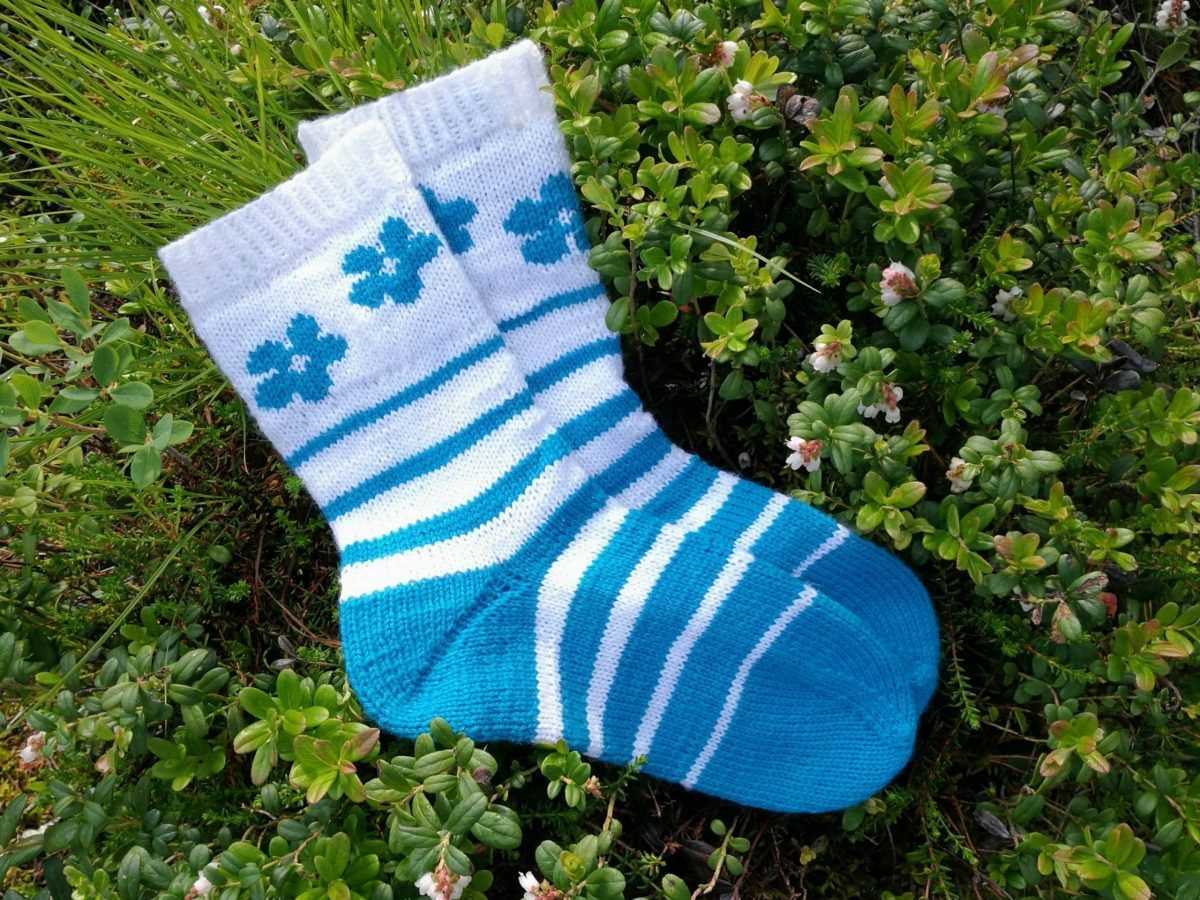
When knitting socks without heels, the pattern may require certain increases or decreases at specific points. It’s important not to skip these instructions, as they are crucial for shaping the sock and ensuring it fits properly. Pay close attention to the pattern and follow the instructions carefully to achieve the desired shape and fit.
5. Not trying on the sock as you go
It can be tempting to knit the entire sock without trying it on, especially if you’re confident in your measurements. However, trying on the sock as you go can help you catch any fit issues or mistakes early on. This will give you the opportunity to make adjustments before completing the sock, resulting in a better-fitting finished product.
Avoiding these common mistakes will help you successfully knit socks without heels and create a comfortable and unique pair of socks. Happy knitting!
How to care for knitted socks without heels
Caring for knitted socks without heels requires some special attention to maintain their shape, durability, and overall quality. Here are a few tips to help you properly care for your knitted socks:
1. Hand wash with care: To avoid damaging the delicate fibers of your socks, it is best to hand wash them. Fill a sink or basin with lukewarm water and add a mild detergent specifically designed for washing delicate items. Gently agitate the socks in the soapy water, then rinse them thoroughly with cool water.
2. Avoid machine washing and drying: Knitted socks without heels are more delicate and prone to stretching and losing their shape. Avoid machine washing and drying, as these can cause the socks to shrink or become misshapen. Instead, take the time to hand wash and air dry them.
3. Air dry flat: After washing, gently squeeze out excess water from the socks without wringing or twisting them. Lay them flat on a clean, dry towel or a mesh drying rack. Avoid hanging the socks, as this can cause them to stretch. Allow them to air dry completely before wearing or storing.
4. Store properly: When not in use, store your knitted socks without heels in a clean, dry place. Avoid folding or crushing them, as this can misshape them over time. Instead, roll them up loosely and place them in a drawer or a storage container with a lid to protect them from dust and moths.
5. Rotate your socks: To prolong the lifespan of your knitted socks without heels, it is advisable to rotate them. By alternating between different pairs of socks, each pair gets ample time to rest and retain its shape. This also helps prevent excessive wear and tear in specific areas.
By following these care instructions, you can ensure that your knitted socks without heels remain soft, comfortable, and long-lasting for many seasons to come.
Inspiring ideas and patterns for knitted socks without heels
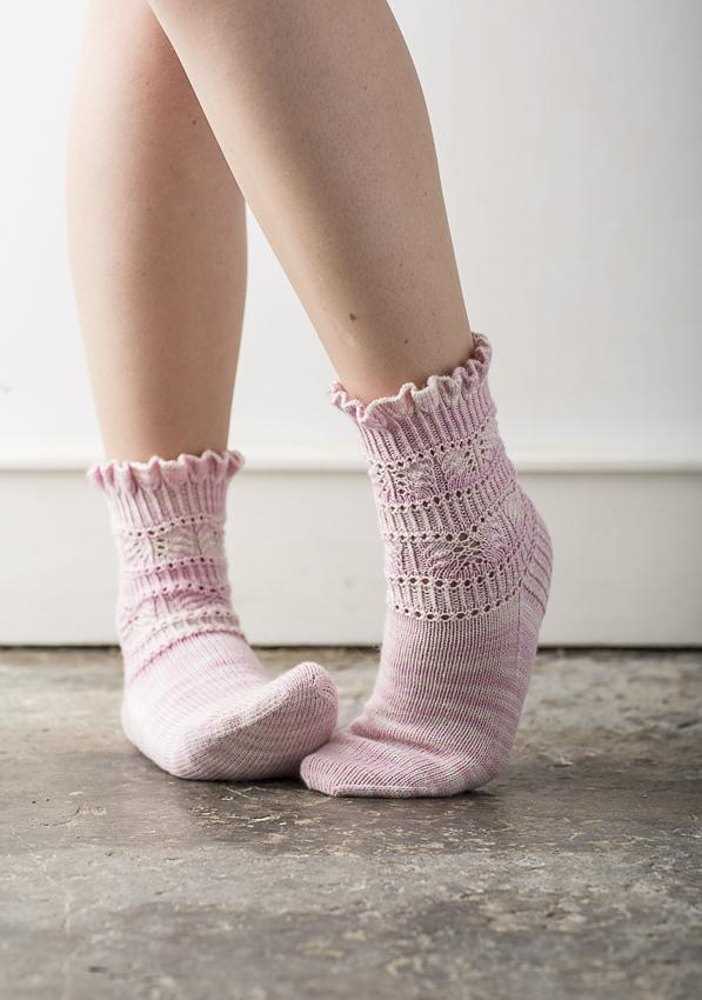
Knitting socks without heels can be a fun and creative project for knitters of all skill levels. Whether you’re a beginner looking for an easy pattern or an experienced knitter looking for a unique challenge, there are plenty of inspiring ideas and patterns to choose from. Here are a few options to get you started:
1. Toe-less socks
If you love the feeling of being barefoot but still want to keep your feet warm, toe-less socks are the perfect option. These socks typically cover the foot up to the ankle or mid-calf, leaving the toes free. They can be easily customized with different stitch patterns and colors, making them a great choice for experimenting with new techniques.
2. Anklet socks
Anklet socks are shorter than traditional socks, typically covering just the ankle. They are perfect for wearing with sneakers or low-cut shoes during the warmer months. Knitting anklet socks without a heel is a quick and easy project that can be completed in no time. They are also great for using up leftover yarn from other projects.
3. Cuff-down socks with an open heel
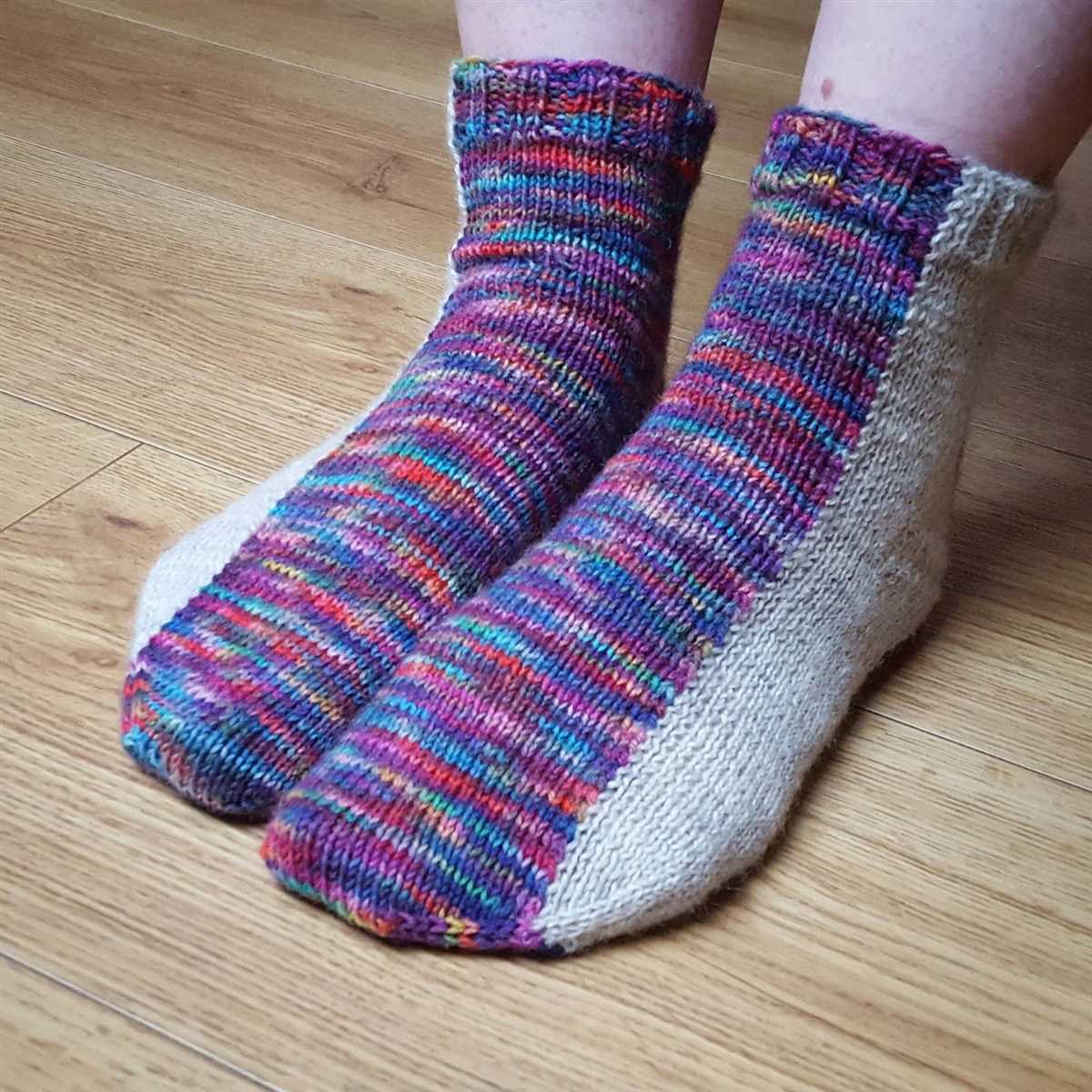
If you want the look and feel of traditional socks but don’t want to knit a heel, you can try knitting cuff-down socks with an open heel. These socks are typically knit in the round from the cuff to the toe, with a gap left at the heel. This allows for easy slipping on and off without the need for a heel flap or gusset. You can still add decorative stitches or patterns to make them unique.
4. Slipper socks
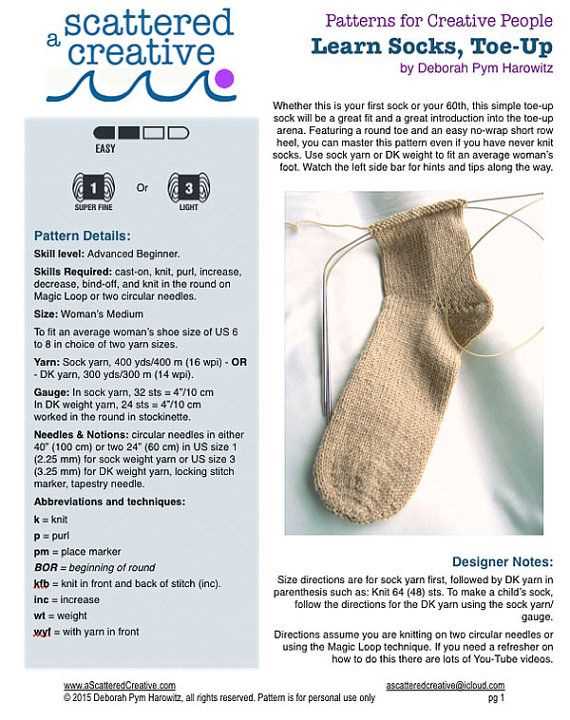
Slipper socks are a cozy and comfortable option for lounging around the house. They are typically thicker and warmer than regular socks and often have non-slip soles to prevent slipping on smooth surfaces. Knitting slipper socks without a heel is a great way to create a seamless and comfortable fit for your feet.
- Experiment and have fun!
These are just a few inspiring ideas and patterns for knitted socks without heels. The possibilities are endless, so don’t be afraid to experiment and let your creativity shine. Whether you choose to knit toe-less socks, anklet socks, cuff-down socks with an open heel, or slipper socks, you’re sure to enjoy the process and end up with a unique and comfortable pair of socks.
Happy knitting!